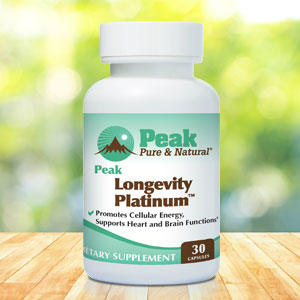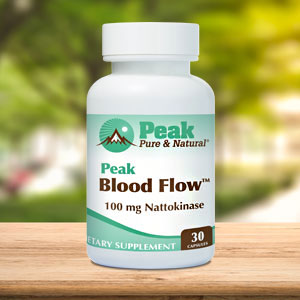Get Easy Health Digest™ in your inbox and don’t miss a thing when you subscribe today. Plus, get the free bonus report, Mother Nature’s Tips, Tricks and Remedies for Cholesterol, Blood Pressure & Blood Sugar as my way of saying welcome to the community!
The unseen damage of vitamin deficiencies: Sacrificing longevity

When it comes to taking vitamins and minerals to improve or maintain your health, most doctors will tell you not to worry about them. They’ll give you an earful of negativity if you ask about supplementing.
In all my years of natural health research, I can only come to two conclusions as to why: First, to them, health hinges on medicine alone. Secondly, they are stuck on the idea that you get all the nutrition you need from food.
I’ve written before about how inadequate our food supply is at providing proper levels of the nutrients the body needs, so I won’t bore you with all of the details — but it’s partly due to depleted soil and the business of food processing, which strips out everything healthful only to replace it with synthetic versions of vitamins your body doesn’t absorb as well.
Well, thank goodness for scientists like Dr. Bruce Ames, who, after more than a decade of research would argue that shortages of vitamins and minerals are not only very real and widespread but that by skimping by with inadequate amounts, we’re cheating ourselves of valuable “longevity vitamins” critical to long-term maintenance.
The triage theory
Research into aging is at an all-time fever pitch. But if Dr. Ames is correct, some of the best longevity agents have been under our noses the whole time, but we’ve barely given them half a chance.
Dr. Ames has presented a novel idea about vitamins and minerals and how the body uses them, known as the triage theory. And it could revolutionize the longevity game.
In a nutshell, Dr. Ames’s theory explains why deficiencies — even ones without overt symptoms — could contribute to the aging process, shortening longevity.
According to Dr. Ames, nutrition science ignores the fact that most vitamins and minerals are not only needed to maintain our day-to-day health — but that they are also required by hundreds of enzymes within our cells that perform processes that impact long-term health, in other words — our longevity.
When those vitamins and enzymes work together, they’ve got bigger goals in mind than just tomorrow. Vitamins like vitamin D, omega-3 fatty acids and magnesium are critical to helping different kinds of enzymes repair DNA damage and prevent oxidative damage — actions that prepare the body for the long haul.
So when the body is not getting enough of a vitamin (or other compounds I’ll detail shortly), it’s rationed. And you can probably guess where the largest share goes… to the processes that ensure immediate survival. That means any processes the enzymes and vitamins work together on that could impact longevity, get the short end of the stick. And so do you.
9+ Longevity “vitamins”
In his work, he has identified survival vitamins and longevity vitamins, and there is crossover as well: some vitamins may fulfill both functions, which makes sense. You can’t live later if you’re not functioning well now.
At least 70 percent of Americans are deficient in the vitamins, minerals and compounds that Dr. Ames says should be recognized as “longevity vitamins.”
Shortages can be problematic, but some deficiencies don’t make their damage known for years. Others may have a quicker impact…
For instance, Dr. Ames’s research team has seen that when low-level deficiencies of vitamin K and selenium occur, the body produces fewer enzymes needed to keep arteries clear, sacrificing more vitamin K for blood clotting.
Before I list Dr. Ames’ “longevity vitamins,” I need to mention that every nutrient on this list is not a vitamin in the traditional sense. And I’ll include a few notes from Dr. Ames’s paper in the list.
Those marked with an asterisk are both survival and longevity vitamins, of which vitamin K is also one (per the example above), and in his paper, Dr. Ames cites references that associate deficiencies of these three, and many of the others as well, with serious illnesses that affect healthy aging…
- Vitamin D*. About 2,700 binding sites have been found in the human genome interacting with the vitamin D receptor protein. Extensive evidence shows that vitamin D deficiency causes, or has been associated with, a large number of illnesses that affect healthy aging. It is estimated that vitamin D levels in 70 percent of the U.S. population are inadequate. Dr. Ames states that fear of toxicity is to blame for discouraging supplementation and that newer evidence on the effect of vitamin D on all-cause mortality supersedes these toxicity studies, concluding that there was no increased risk even when blood levels of 25(OH)D were as high as 100 ng/mL.
- Omega-3 fatty acids* (DHA and EPA). Dr. Ames cites research that intake of these compounds is inadequate in most of the U.S. population, and studies that conclude: low blood levels of DHA/EPA were shown in a 5-year study to be associated with a faster rate of telomere shortening, a marker of cell aging; Supplemental fish oil (2.5 g/d) slowed telomere shortening and lowered biomarkers of oxidation in older adults; Daily supplemental DHA (2 g/d) increased the rate of clearance of amyloid plaques in people with mild cognitive impairment; DHA/EPA are important for vitamin D steroid hormone effectiveness.
- Magnesium*. About 45 percent of the American population is deficient in magnesium, which is associated with poor DNA repair capacity, telomere shortening, as well as illness.
- Choline. Only 11 percent of women achieve the recommended intake and the average intake for the population are half to two-thirds of this recommendation; severe choline deficiency results in DNA strand breaks in rodents, alterations to epigenetic markers and histones, and affects brain development. Good sources of choline include chicken, fish, lean pork, eggs, beef, shrimp, beans, low-fat milk, broccoli, and green peas.
- Taurine is important in preventing numerous health problems and it is particularly important in the mitochondria. Because of taurine’s extensive involvement in health problems that lead to long-term damage, Dr. Ames proposed that it is also a longevity vitamin. Most taurine is acquired from the diet, mainly from fish and other seafood, seaweed, eggs, and dark-meat poultry.
- Ergothioneine (ESH), according to Dr. Ames, has many characteristics that suggest an involvement in healthy aging. ESH is present in almost all human cell and tissue types, often at millimolar levels in the brain, bone marrow, lens and cornea of the eye, and erythrocytes, where it appears to play a significant role as an antioxidant. It is present in the human diet, mostly synthesized by most mushrooms. A detailed analysis suggests that mushrooms are a major ESH source in Europe. Oyster and king boletus mushrooms contain about >100 mg/kg wet weight. Foods known to have moderate levels of ESH (1 mg/kg wet weight) include beef, pork, lamb and chicken. Oat bran, black turtle bean and red kidney bean contain >3 mg/kg.
- Pyrroloquinoline Quinone (PQQ). PQQ is an important plant growth factor imported from rhizobacteria. It is a powerful antioxidant and is much more stable than ascorbic acid. PQQ supplementation improved antioxidant potential and decreased the levels of mitochondrial-related intermediates and metabolites in urine, providing support for previous studies that demonstrated that PQQ improved mitochondrial efficiency.
- Queuine has a complex role in the conversion of phenylalanine to tyrosine, of tryptophan to serotonin, of tyrosine to DOPA (which gets converted into epinephrine and norepinephrine), of arginine to NO, and for the oxidation of alkyl glycerol lipids — therefore relevance to numerous neurological conditions. Queuine is an evolutionarily ancient compound, and detectable amounts of queuine have been identified in tomatoes, wheat, coconut water, and milk from humans, cows, and goats. Humans and mice recover queuine from either ingested food or the gut flora.
- Carotenoids: This group includes lutein, zeaxanthin, lycopene, α- and β-carotene, and β-cryptoxanthin and the powerful marine carotenoid astaxanthin. These first six are plant carotenoids that account for 95 percent of the carotenoids found in American blood and brain. Astaxanthin is sourced from algae, yeast, salmon, trout, krill, shrimp and crayfish.
Dr. Ames is a Senior Scientist at Children’s Hospital Oakland Research Institute (CHORI), director of their Nutrition & Metabolism Center, and a Professor Emeritus of Biochemistry and Molecular Biology, University of California, Berkeley. His scientific career has spanned seven decades.
Says Dr. Ames, “The prevention of the degenerative diseases of aging is a different science than curing disease: it will involve expertise in metabolism, nutrition, biochemistry and genetic regulatory elements and polymorphisms.”
Editor’s note: Are you feeling unusually tired? You may think this is normal aging, but the problem could be your master hormone. When it’s not working, your risk of age-related diseases skyrockets. To reset what many call “the trigger for all disease” and live better, longer, click here to discover The Insulin Factor: How to Repair Your Body’s Master Controller and Conquer Chronic Disease!
Sources:
Prolonging healthy aging: Longevity vitamins and proteins — Proceedings of the National Academy of Sciences of the United States
Adequate Consumption of ‘Longevity’ Vitamins Could Prolong Healthy Aging, Nutrition Science Says — University of California San Francisco














